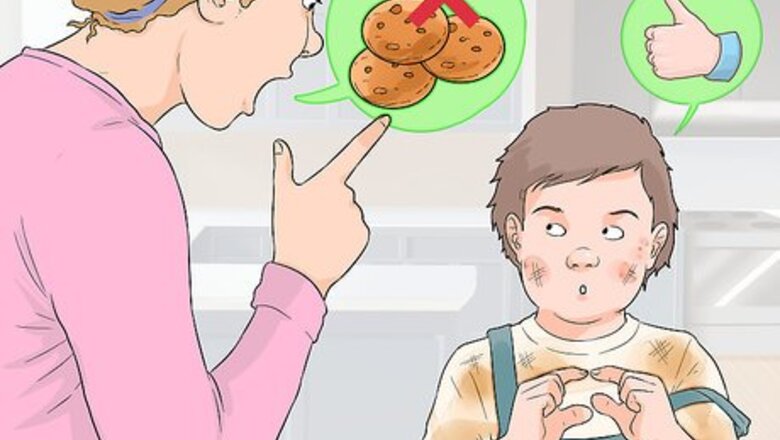
views
Setting Clear Expectations
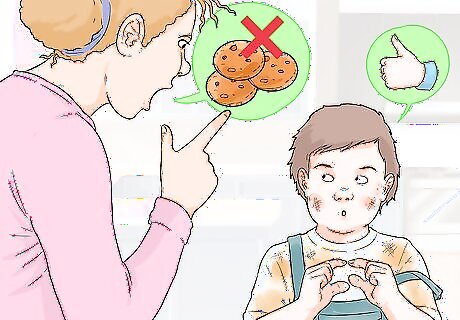
Follow through with consequences. Idle or empty threats are common, and children generally know that. They won’t respond or change their behavior if they don’t believe that their parents will follow through. This makes your child stop looking at you as an authority figure. When you say you are going to punish them or give them consequences, make sure that you do that. By giving your child a lot of idle threats, you can negatively impact the relationship that you have. This can cause discipline problems later in life.

Be consistent. Having consistent discipline helps establish rules and boundaries for your child. Being consistent with your discipline and following through helps your children have a routine and understand consequences for their actions. Being consistent means giving a punishment each time they misbehave, not just sometimes. You can also create specific punishments for certain behaviors, so you and your child know what to expect if they do a certain thing.
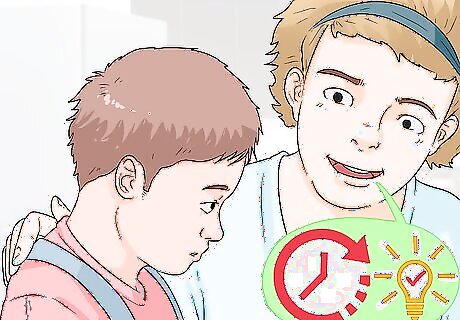
Talk to your child about your expectations. After misbehavior occurs, take your child aside or somewhere where the two of you are alone. Talk to them about the misbehaving incident. Explain what the problem was and what you expect from them. You cannot expect a child to understand adult language and reasoning. Explain the rules and expectations as simply as you can. For example, you may say, “Tonight, you jumped on the couch while we had guests. That behavior is not acceptable. If you are excited or upset, it is not okay to jump on the furniture. We can find a better way for you to act if you are excited. Next time you jump on the furniture, you will receive a timeout.” Instead of saying, “This rule will help you obtain independence and maturity,” say instead, “This rule helps you grow into the best, most helpful, and loveable big kid!” You might also consider taking something away from them as a form of punishment. For instance, say that they can’t watch a show they enjoy if they continue to engage in bad behavior.
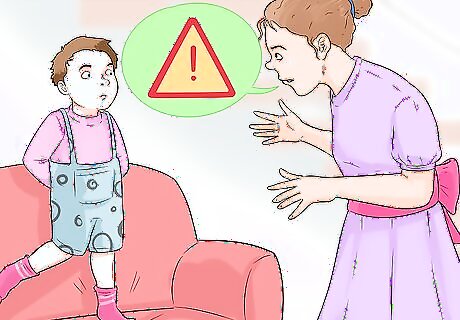
Find ways to follow through no matter where you are. Sometimes, it may not be convenient to follow through with a warning. However, you still need to be consistent and follow through with the consequences for your child. Find a way to follow through even if you are in public. For example, if you are at a party, you may say, “I will put you in time out if you do not stop jumping on the furniture.” If they don’t stop, take them to an empty room, outside, or in a corner - any place they can have a time out. You can find benches or less populated areas if you are in a store or restaurant.
Changing Your Discipline Approach

Avoid making extreme threats you could never carry out. Often, idle threats are extreme and over-the-top. The parents probably would never carry out the threat because it may harm the child. Don’t tell your child that you will do something that you would not feel comfortable following through on. For example, an extreme idle threat may be, “If you don’t stop, I’m going to leave you here” or “If you don’t eat, I’m not going to let you have any more food today.” These are threats that you wouldn’t carry out on your children.

Think before you offer a punishment. Many idle threats occur when a parent is frustrated and speaks without thinking. To help you avoid this, try to think through what you are saying before you say something to your child. This helps you make a conscious decision about the punishment you are confronting your child with. When your child misbehaves, take a deep breath. Count to five before speaking. Do whatever you need to do so that you have a few moments to think before speaking. Ground yourself first. For example, you might take 5 deep breaths and then slowly count to 20 in your head to get some clarity.

Ignore the behavior at first. Instead of shouting an empty threat, try ignoring the negative behavior if you cannot deal with it right then. Sometimes, children misbehave for attention and threatening them gives them attention. Try ignoring them and taking a few minutes to calm down instead of giving them idle threats in frustration. For example, if you are at a party and your child is overly excited and acting out, don’t threaten them with something you won’t carry out, like going home or no dessert. Instead, give it a few minutes to see if they will calm down.
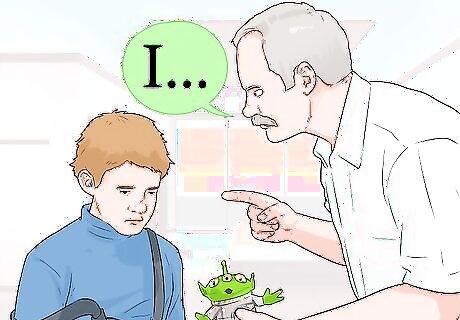
Use “I” statements in your warnings. When you make warnings, use “I” statements to emphasize what you plan on doing in response to their behavior. This helps set a clear consequence. Additionally, it helps go beyond the word “no” and other phrases that are similar, which your child may tune out. For example, say “I will throw away your toys if you don’t put them away in the next few minutes” instead of “You won’t have any toys if you don’t clean your room.”

Talk to your child if you make an idle threat. When a child knows you’ve made an empty threat, it leads to learned bad behavior. If you accidentally make an idle threat, make sure that you talk to your child to reestablish balance. Start by sitting down privately with the child. Apologize for making an idle threat. Tell the child their behavior is unacceptable and you are not happy with how they have acted. Set a more reasonable punishment for their behavior.
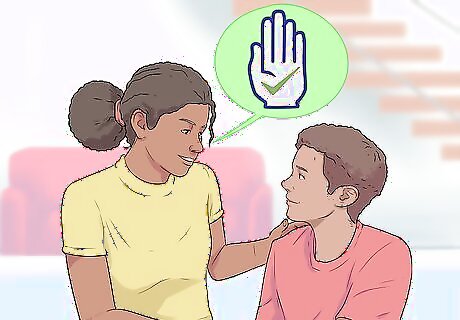
Don’t be too hard on yourself. Parents make mistakes, even if you focus on discipline and consistency. You get frustrated, stressed, and tired. When you feel this way, you may slip up and accidentally make an idle threat. If you do this, don’t beat yourself up. Remember, you are human and being a parent isn’t about perfection. If you make a mistake, accept it. Tell yourself, “I accidentally made an idle threat today. Next time, I will take a few deep breaths before I react.”
Finding Alternative Behavior Modifications
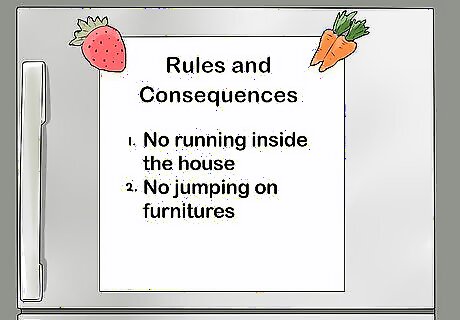
Make a list of rules and consequences. If you and your child are aware of what is expected of them, it makes it easier to discipline and correct behavior. Make sure your child is aware of your rules and the consequences for breaking those rules. That way, if they misbehave, you don’t have to come up with a threat because you both already know the consequences. Follow up with positive reinforcement when they comply. Using positive reinforcement, such as praise, money for chores, or a nice reward is the best way to create lasting behavior or habits. Think about including your child when making a list of rules and consequences. Kids can be more likely to follow rules if they had a say in creating them. If you are doing something new, you may need to talk about new rules. For example, if you are going to someone’s home, you may let your child know they cannot run in the house or jump on the furniture. If you go on vacation, let them know they cannot run off without a parent or guardian.

Give alternative choices. Instead of threatening your child, even if you will follow through, consider giving your child choices to alter the behavior. Offer an alternative to the behavior or ask them how you can solve the problem together. For example, if your child is jumping on the furniture, try giving them choices of alternative behavior. Try saying, “I know you’re having fun jumping on the couch, but the furniture is not meant for jumping. Would you like to go jump outside, or would you like to play with some toys in your room?” You can ask your child how to fix the problem. You can say, “I know you want to go play outside, but I need to finish dinner. What can we do to solve this problem?”

State the change in behavior instead of threatening your child. You can avoid making threats by changing the way you approach misbehavior. Instead of giving a cause and effect threat that is based on the continued bad behavior, tell the child what they are going to do to correct the behavior. Use a firm voice that isn’t raised in volume, and help them do the correct action if possible. For example, if your child won’t stop playing outside and come inside for dinner, don’t say, “If you don’t come in I will throw your dinner away.” Instead, tell your child, “It is time to come inside for dinner.” Wait for them to do it, and if they do not, go out into the yard and calmly lead them inside. If you tell your child, “It is time to put your toys away and get ready for bed,” then help them put their toys away if they need a push to the correct behavior. Model correct behavior rather than rushing to punish.



















Comments
0 comment